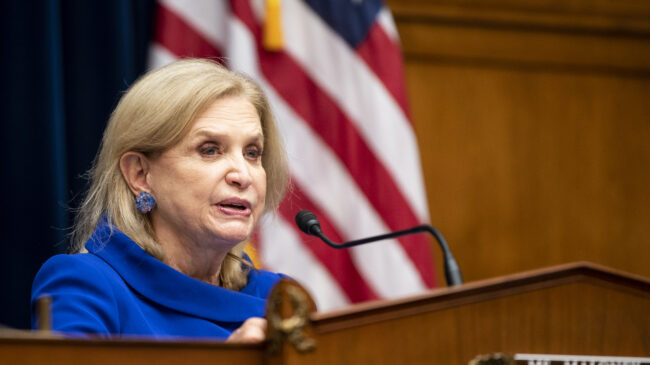Chair Maloney, Ranking Member Comer, and Oversight Committee Members: Thank you for giving me the opportunity to share my observations about the Coronavirus State and Local Fiscal Recovery Funds provided under the American Rescue Plan Act. My name is Marc Joffe, and I am a senior policy analyst at Reason Foundation, specializing in fiscal policy issues.
When federal, state, and local governments began implementing COVID-19 public health measures two years ago this month, it was reasonable to expect that states, counties, cities, and smaller government jurisdictions would face large and widespread revenue losses.
But, by early 2021, in the runup to the passage of the American Rescue Plan Act (ARPA), it had become apparent that the severe revenue losses government entities were expecting had not materialized and were unlikely to occur. Thanks to recent technological innovations such as cloud computing and videoconferencing, large parts of the American workforce were able to work remotely without significant productivity losses. While some sectors of the economy, like travel and hospitality, were hit hard, consumers substituted online purchases for visits to retail stores. Most Americans received federal stimulus checks. And Federal Reserve stimulus helped elevate stock and real estate values. As a result, tax receipts from income, capital gains, sales, and property taxes remained robust.
In February 2021, I determined from a review of interim state fiscal reports that state governments had suffered an overall revenue decline of just 0.01% between the calendar years 2019 and 2020. Similarly, quarterly Census Bureau data on local government revenues also suggested that they had not suffered through that point of the pandemic.
These totals hid variability across governments. Entities heavily dependent on tourism such as Hawaii, Nevada, and the city of Anaheim, home to Disneyland, were hit harder than other places. California also suffered significant revenue losses at the beginning of the pandemic, but these losses were offset by a gusher of income and capital gains taxes from technology companies and their employees, who benefited from the pandemic-driven boom in online activity.
While the facts available to us last March may have justified a targeted revenue support program for a small number of government entities, it clearly did not support a generalized federal aid program. Unfortunately, advocates of this stimulus largely relied on stale revenue projections, as well as overly pessimistic responses from a survey of city officials that was taken at the start of the crisis.
The Coronavirus State and Local Fiscal Recovery Funds (SLFRF) program was not only excessive but was also poorly targeted. The state of California, which received $26.5 billion, or 7.6% of the total aid package, went on to report a record state budget surplus. There was also a disturbing discrepancy in per capita aid distributions. While Florida’s state, county, and local governments were allotted $739 per capita, the Commonwealth of the Northern Mariana Islands and its local governments are receiving more than $10,500 per capita. The Commonwealth itself was allotted $482 million to spend on its 47,000 residents.
The most recent interim reports submitted by states, counties, and metropolitan cities to the Treasury Department indicate that governments had spent less than $10 billion of their SLFRF revenues as of July 31, 2021. The largest share of expenditures went to replenishing depleted state unemployment funds. While this was a judicious use of relief proceeds, it is not one that provides any near-term stimulus. With so little of the SLFRF funds being spent on employees, supplies, or services, it is clear that state and local ARPA spending had little impact on economic growth during the second quarter of last year. In hindsight, this result undermines another dubious justification that was used to call for quick passage of ARPA—that it would provide a quick stimulus to lift the economy out of a pandemic-induced recession. In fact, we know the economy had already been growing for 11 months before ARPA was signed.
Legislative restrictions on the use of SLFRF proceeds are complex. Treasury regulations have compounded challenges to effectively use the funds. Several states are litigating a ban on using the SLFRF money to backfill tax reductions, which could stimulate economic activity. Other states, like Illinois, which might have used ARPA funds to pay down debt their unfunded public pension liabilities were prohibited from doing so.
The Treasury Department did not publish final regulations on the usage and reporting of funds until January 2022, after most of the money had been distributed. The department was also slow to publish reports it received from recipient governments and, contrary to the spirit of the bipartisan Grant Reporting Efficiency and Agreements Transparency (GREAT) Act of 2019, did not provide machine-readable reporting standards for grantees. As a result, our understanding of the overall impact of SLFRF is based more on anecdotes than on rigorous data analysis.
I do not doubt that the American Rescue Plan Act advocates and governments receiving the Coronavirus State and Local Fiscal Recovery Funds can point to positive things that have been accomplished with this federal support. But, as the recent resurgence of inflation has shown, the laws of economics have not been repealed: Resources are scarce. The United States cannot pretend otherwise by financing large federal deficits with newly created dollars. Taxpayer funds should always be used judiciously. Giving $350 billion in emergency aid to state and local governments that, for the most part, were not facing a fiscal emergency was not a judicious use of federal taxpayer money.

